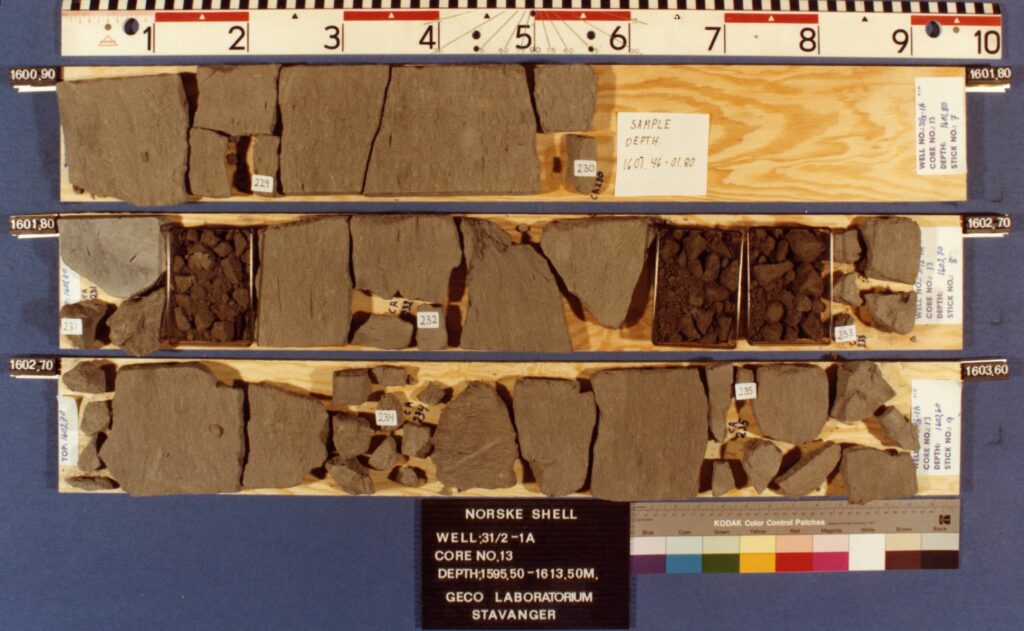Discovering Troll – Flathead, Leif and Lars

It was not that hard to see the “flat spot” in the seismic map of blocks 31/1, 31/3, 31/5 and 31/6. This anomalous reflector cut through the geological layers in the area and lay horizontally – hence its name. It was dubbed Flathead by Shell, while Chevron registered the feature as two structures which it named Leif and Lars. Covering 750 square kilometres, the spot was so large that not everyone could accept what they were seeing.
“It was quite simply difficult to believe what we saw,” said Jakob Bleie, Statoil’s exploration manager.[REMOVE]Fotnote: Lerøen, Bjørn Vidar, 1996, Troll. Gas for generations: 30. But Phil Watts, his opposite number at Norske Shell, had no such doubts: “I saw the reservoir in Troll, where it began and ended, and was absolutely convinced that this was live hydrocarbons”.

The first data were acquired in the early 1970s, and newer seismic surveys confirmed the original observations. Several companies had seen these findings and formed a picture of the geology but, since the water depth in the area was around 300 metres, considerable uncertainty prevailed over whether the petroleum was commercially recoverable. To rephrase this – while the geologists liked the structure, the petroleum engineers and economists were more sceptical. Technological advances would be needed to produce from waters which were twice as deep as for existing fields on the Norwegian continental shelf (NCS). However, the potential rewards were so great that many companies were interested.
Titillating but terrifying Troll
Blocks in the area were not awarded simultaneously but in several rounds and to different companies, which eventually also led to conflicts over operatorships, recovery strategies and division of interests. At the same time, the step-by-step awards were perhaps crucial in ensuring that the development solutions ultimately chosen were good.
A number of companies applied for block 31/2 when it was put on offer as the first of the Troll quartet, despite the water-depth deterrent and uncertainty about whether the flat spot indicated oil, gas or residues of petroleum which had leaked away.
Norske Shell secured a 35 per cent holding in the resulting production licence 054 and was chosen as exploration operator, but had to accept that Statoil received 50 per cent and the opportunity to increase this to 75 per cent. On top of that, Shell conceded that the government could transfer the operatorship to Statoil in the production phase. The other partners were Norsk Hydro, Norsk Conoco and Superior Oil Norge, each with five per cent.
When the adjacent blocks covering Troll came to be awarded, Norske Shell received nothing. PL 085 was awarded to Statoil, Hydro and Saga Petroleum, and it was – eventually – decided that the first of these would be operator for the gas while the second handled the oil.
Discovery

Norske Shell and its partners in PL 054 had accepted a work commitment which involved drilling six exploration wells – admittedly with the opportunity to reduce this number if the first four showed there was no hope of finding oil or gas.
The first well on Troll was spudded (started) on 17 July 1979 by the Borgny Dolphin rig, which had recently changed both name and owner. Its target was a Jurassic fault block with overlying shales deposited in the Cretaceous and later. But problems with the 30-inch casing led to a new well being spudded 50 metres south of the original location, which made better progress.

A 135-metre gas column in a good-quality reservoir was proven by this well, with a possible underlying oil zone about 12-25 metres thick. Cores were extracted to learn something about the formation’s reservoir properties, while samples confirmed that the gas was of good quality – with no large quantities of sulphur or other unwanted components.
The identified flat spot was confirmed to represent the transition from oil to gas. That also meant the great extent – and thereby volume – of the discovery was established.
It was immediately clear that a substantial reservoir had been found. But just how big it might be remained unclear. “I don’t know how big Troll is, but I’m looking forward to the day I find out,” commented Farouk Al-Kasim, resource management director at the Norwegian Petroleum Directorate (NPD).
After 115 days, the discovery well was abandoned with the opportunity to return for production testing. What was and remains Norway’s largest petroleum deposit had been proven.
Three years and 12 appraisal wells later, Norske Shell declared the field commercial at the Advanced Projects Conference in Stavanger during November 1983.
Further appraisal drilling showed that an oil zone was present under the gas in the Troll West area. Given existing technology, nobody thought these resources could be recovered. This view was challenged by the NPD, which argued that the zone might be thin but its extent and thereby its volume were so large that the oil had to be recovered. That was also done, but with Hydro as the operator and after technological advances in drilling horizontal wells.
It took no less than 26 appraisal wells before the first – but not the final – plan for development and operation (PDO) could be submitted to the government. And production did not begin until 1995 for Troll Oil and 1996 for Troll Gas.
Further reading: https://factpages.npd.no/en/wellbore/pageview/exploration/all/398
arrow_backThe Volvo agreement – almost VolvoilForemost at Forusarrow_forward